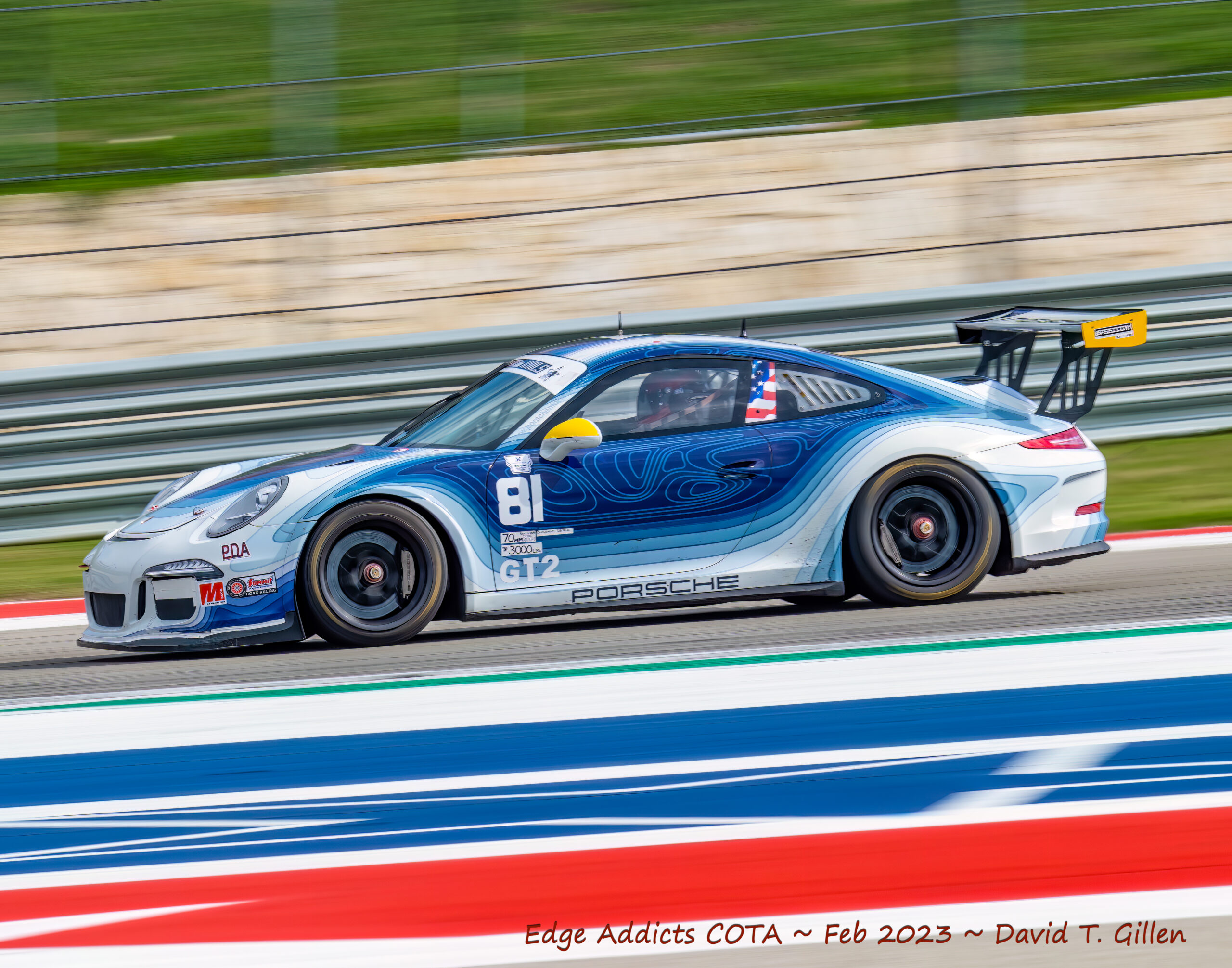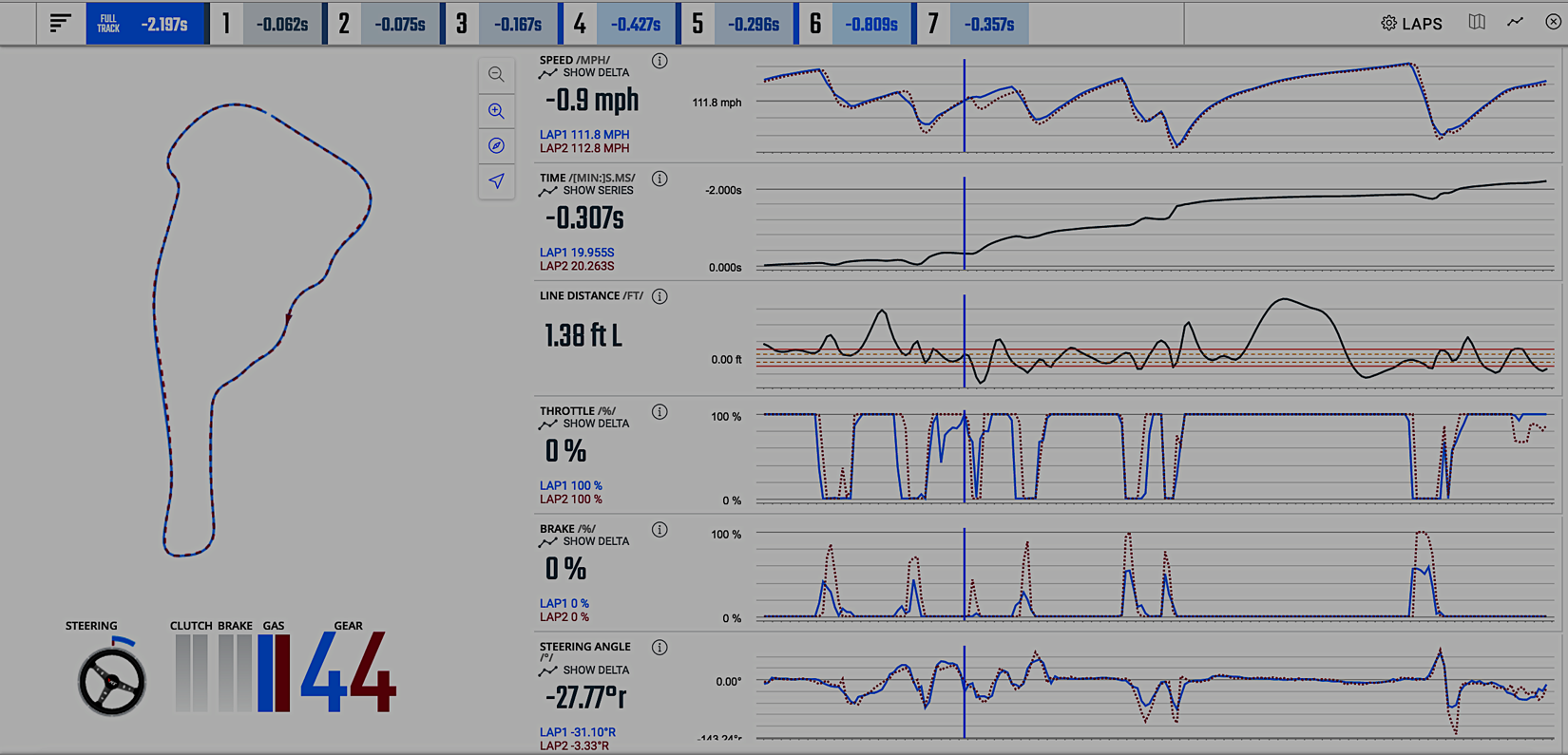
For the third year in a row, we headed back to Austin, Texas for the second round of the Hoosier Super Tour at the beautiful and challenging, Circuit of the Americas. Thankfully, we avoided the annual winter freeze that hits southern Texas and while it was dry all weekend, it wasn’t “warm” except for on load-in day (Thursday) and Sunday afternoon. Perfect! (Insert thick amounts of sarcasm)
Prior to the race weekend Jordan, Memo, Bryce and Mark flew into Houston, TX where we had the cars and trucks stored to whip the cars into shape. Can’t say enough how grateful we are to have friends across the country that have helped us with space to park and work on the cars. Thank you Todd Joseph Farley (TMJ Bimmers) and James Walker Jr!

For this race report, we’re going to do something a little different. Driving at these bucket list tracks, we regularly get asked which track is our favorite, most unique, most scary and/or most challenging? So for this report, we’re going to focus a little more on what makes COTA such an awesome and challenging track to tackle.
1. COTA is Big!
At 3.426 Miles and 20 corners (using the Grand Prix layout), COTA is a long track with at least 20 opportunities to make a mistake and decent distances after a corner, so that you have ample time to relive and think about the mistake(s) you just made. All the while, watching your predictive lap timer reinforce, with math, that you made a mistake. 🙂
The volume of corners in terms of learning the track is a challenge but to be perfectly honest, in the three years that we’ve come to the SCCA Hoosier Super Tour with now seven different drivers, not once have we had a discussion about “what corner comes next” or “the line” in terms of just getting around the track.
Each driver puts in the preparation work before the race weekend with time in a simulator, watching race videos and track walks – our drivers come to compete!
So “learning the track” isn’t a thing but another aspect of COTA that is a challenge is how wide the track is. This is a blessing and a curse. The track in general is wide enough to go three wide in multiple segments, which results in multiple lines that can be taken through a corner or sequence of corners. This gives us flexibility in racing conditions but it gives the same flexibility to competitors.

From the approach of turn 1 through the entry to the esses (turn 3) , it’s not just feasible but it’s common to see cars going 2 and 3 wide with only a marginal drop off in lap time.
Turn 6 is wide enough that it’s possible to attack another car from the outside, which then turns into the inside for Turn 7.
The entry into Turn 11 is like turn 1, almost an open runway with a lot of space to dive bomb into the corner but with the longest straight away on the tracking coming next, going two or three wide into turn 11, will punish your straight line speed down to turn 12. There are even lines to overtake someone on the outside in Turn 1, especially at the start of the races.
Turn 12 also is wide enough for at least two cars to go side by side and while not particularly fast, it’s possible and common throughout the weekend to see cars going side by side all the way until Turn 19.
Finally, Turn 20 can also easily allow two cars to go side by side but it will impact the exit speed and thus the time that runs all the way to turn 1.
2. COTA is technical. Really Technical.
Many tracks have some kind of bias due to the natural outcome of being “lap based” – e.g. at some point, the track will return back to start/finish. If a track has a clock-wise orientation, there will usually have more right hand corners than left hand corners. If a track is counter-clockwise (like COTA), vice-versa will be true.
So while COTA has a counter-clockwise orientation, it has exactly 10 left-hand corners and you guessed it, 10 right hand corners.
And yes, the three longest straight aways are setup by left-hand corners, which would normally make a team want to setup a car to be biased for left-hand corners BUT there are 6 different corners that are either high-commitment or high-duration (you spend a good amount of time in them), so it really pushes a team and driver to have a well balanced setup for both corner types, unlike what we’d for say Portland International Raceways or Lime Rock Park – pretty much all right hand corners.

COTA also has a wide variety of corners:
- Short duration, slow speed and sharp angled corners: Slow corners make it really easy for drivers to over-slow on entry and if you don’t have the car pointed just right and at full throttle at the apex, the exit and the proceeding straight away suffer. Think the exit of Turn 1, Turn 11 and Turn 20 where the minimum speeds are in the mid to high 30’s depending on the car. Teams and drivers may be tempted to setup a car nice and loose on slow speed corners to get through these as quickly as possible but…
- Medium/High-Speed Corners: Turn 3 (the entry into the esses), you enter near the top of 4th gear in the Spec E46’s (~105mph) and then need a well balanced car to carve through them.
- Long duration medium speed corners: Turns 6 and the Carousel (turns 16 – 18) are both right hand corners where you are in them for longer than most corners. So how do you setup a car to both be awesome on slow quick corners but not too skaty through carousel type corners?
- COTA beats up cars: Remember in 2019 when Sebastian Vettel had a suspension arm break on the exit of a corner? That’s from the bumps that form and change all the time from the ground/earth under the pavement. The dirt on which COTA sits isn’t super stable to begin with due to how dry the area typically is but then when it rains, it RAINS – think flash flooding. COTA has been repaved multiple times and it was repaved in time for the 2022 season (we were there) but in that one single year, the track has gone from a pretty smooth pavement, to having bumps all over the track.
- Some notable bumps exist in the braking for Turn 1, throughout Turn 6, the exit of Turn 9, breaking for Turn 11 and right as you confidently exit the carousel of Turn 18, there is a healthy sized bumped waiting to knock you off your high horse, when you get too confident.
- Finally, COTA has lots of FIA curbs, of which in the dry are awesome and to be used as much as possible but the repercussion is that the vibrations from curb usage travel all through the suspension and chassis, leading to increase amounts of brake pad knock-back and as I personally found in 2021, damaged suspension components. Expect to do a deep inspection of your wheel bearings, control arms, shocks and a full nut and bolt.

3. COTA is ROUGH!
Remember in 2019 when Sebastian Vettel had a suspension arm break on the exit of a corner? That’s from the bumps that form and change all the time from the ground/earth under the pavement. The dirt on which COTA sits isn’t super stable to begin with due to how dry the area typically is but then when it rains, it RAINS – think flash flooding. COTA has been repaved multiple times and it was repaved in time for the 2022 season (we were there) but in that one single year, the track has gone from a pretty smooth pavement, to having bumps all over the track.
Some notable bumps exist in the braking for Turn 1, throughout Turn 6, the exit of Turn 9, breaking for Turn 11 and right as you confidently exit the carousel of Turn 18, there is a healthy sized bumped waiting to knock you off your high horse, when you get too confident.
Finally, COTA has lots of FIA curbs, of which in the dry are awesome and to be used as much as possible but the repercussion is that the vibrations from curb usage travel all through the suspension and chassis, leading to increase amounts of brake pad knock-back and as I personally found in 2021, damaged suspension components. Expect to do a deep inspection of your wheel bearings, control arms, shocks and a full nut and bolt.
So, how did we do?
Ann Doherty was at COTA for the second time, having done the Hoosier Super Tour in 2022 as well and not only did she improve on her personal best lap times from a year ago, despite the track being in worst shape but she continued her streak of finishing right behind some experienced and very accomplished drivers! The raw pace is there, she’s getting faster and now we shift our focus to a little more on race craft as on the Sunday race, she lost positions on the start and got stuck behind a group of slower cars (in and out of class) and with a couple laps left in the race, she turned it up and got past them all.
Ann also showed serious grit as she got hit decently hard in race 1, lap 1 and turn 1! With a car that had a bent suspension and rear bumper falling off, she finished the race. We got the car put back together the best we could and she finished P5 but with lap times towards the end that would have been in contention for P2 and P3. Awesome job!
Thad Berger not just raced but drove COTA for the very first time at this race weekend! He made solid progress throughout the weekend, improving on just about every session and by the end of the day on Sunday, he was solidly in the mid-pack (P8 out of 13) and battling with MX-5 Global Cup cars and 350Z’s!
Simon Asselin had another busy weekend, doing double duty in his Touring 3 Spec E46 and GT2 Porsche GT3 Cup Car. In Touring 3, he finished P4 in race 1 and P3 in race 2 with AMAZING battles the entirety of both races. Check out his race video below!
In GT2, Simon was busy as well! He started from the back in Race 1 as a cone ended up destroying one of his front tires on the outlap but made his way through to P8 and in race 2, he continued his march forward and ended up P3 for two podiums throughout the weekend. Great job, Simon!
Dave Orem had to last minute pull out of the race weekend due to a family situation but we ran his car during the test day and it was a ripper! Dave will be back for Road Atlanta!
Thank you to the entire team who is behind the scenes and making it all happen! Memo Calderon, Bryce Allen, Jordan Allen, Reid Morris, Tyer Mayer, Tyler Campbell, Mark Farmer, Harry Mineer and our amazing coaches, Seth Thomas and Ray Phillips!





